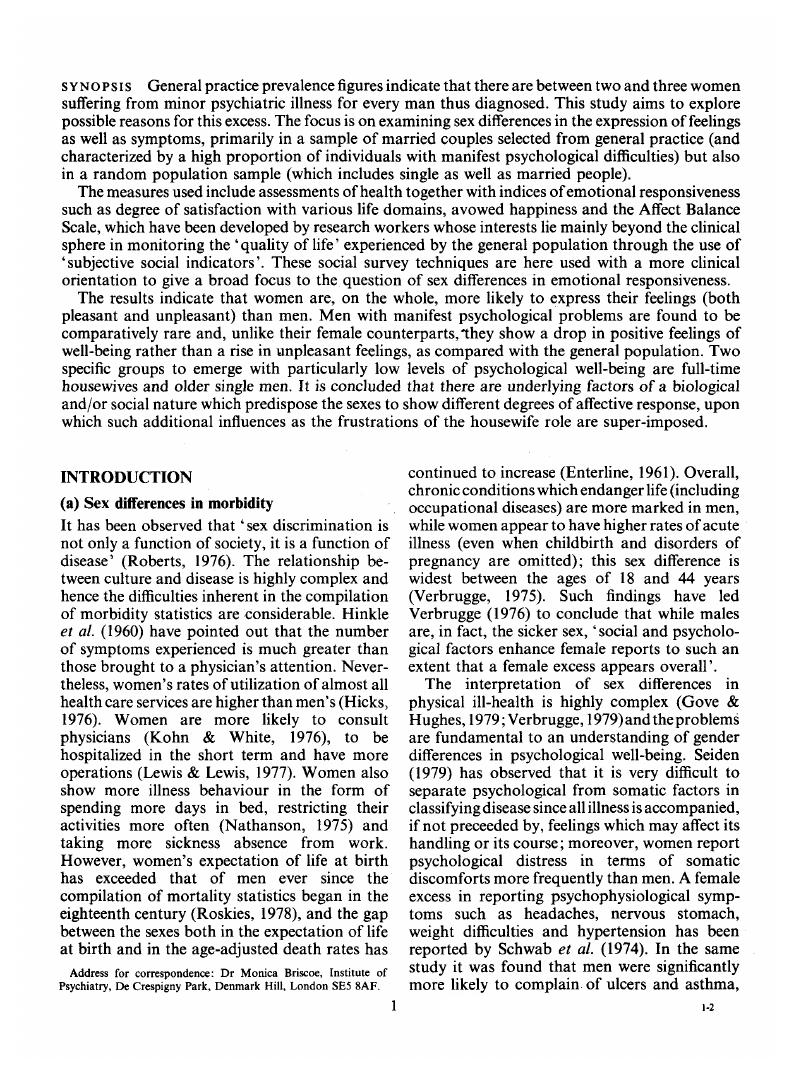Crossref Citations
This article has been cited by the following publications. This list is generated based on data provided by Crossref.
Gilleard, C. J.
Belford, H.
Gilleard, E.
Whittick, J. E.
and
Gledhill, K.
1984.
Emotional Distress amongst the Supporters of the Elderly Mentally Infirm.
British Journal of Psychiatry,
Vol. 145,
Issue. 2,
p.
172.
Ballinger, C. B.
Smith, A. H. W.
and
Hobbs, P. B.
1985.
Factors associated with psychiatric morbidity in women ‐ a general practice survey.
Acta Psychiatrica Scandinavica,
Vol. 71,
Issue. 3,
p.
272.
de Jesus Mari, Jair
and
Williams, Paul
1986.
Misclassification by psychiatric screening questionnaires.
Journal of Chronic Diseases,
Vol. 39,
Issue. 5,
p.
371.
Shek, Daniel T.L.
1988.
MENTAL HEALTH OF SECONDARY SCHOOL STUDENTS IN HONG KONG: AN EPIDEMIOLOGICAL STUDY USING THE GENERAL HEALTH QUESTIONNAIRE.
International Journal of Adolescent Medicine and Health,
Vol. 3,
Issue. 3,
Hunter, Myra
1989.
Health Psychology.
p.
312.
Hafner, R. Julian
1989.
Health Differences Between Married Men and Women: The Contribution of Sex‐Role Stereotyping.
Australian and New Zealand Journal of Family Therapy,
Vol. 10,
Issue. 1,
p.
13.
Shek, Daniel T. L.
1989.
Sex Differences in the Psychological Well-Being of Chinese Adolescents.
The Journal of Psychology,
Vol. 123,
Issue. 4,
p.
405.
Briscoe, M. E.
Vázquez-Barquero, J. L.
Williams, P.
Diez-Manrique, J. F.
and
Peña, C.
1989.
Sex Differences in the Differentiation of Psychiatric Symptomatology.
British Journal of Psychiatry,
Vol. 154,
Issue. 3,
p.
364.
Mcmonnies, Charles W.
1990.
Left‐right discrimination in adults.
Clinical and Experimental Optometry,
Vol. 73,
Issue. 5,
p.
155.
Baker, Frank
Curbow, Barbara
and
Wingard, John R.
1991.
Role retention and quality of life of bone marrow transplant survivors.
Social Science & Medicine,
Vol. 32,
Issue. 6,
p.
697.
Perkins, Rachel E.
and
Rowland, Len A.
1991.
Sex Differences in Service Usage in Long-Term Psychiatric Care.
British Journal of Psychiatry,
Vol. 158,
Issue. S10,
p.
75.
Larsson, Bo S.
1991.
Somatic Complaints and Their Relationship to Depressive Symptoms in Swedish Adolescents.
Journal of Child Psychology and Psychiatry,
Vol. 32,
Issue. 5,
p.
821.
Carta, M. G.
Carpiniello, B.
Morosini, P. L.
and
Rudas, N.
1991.
Prevalence of mental disorders in Sardinia: a community study in an inland mining district.
Psychological Medicine,
Vol. 21,
Issue. 4,
p.
1061.
Zimmermann-Tansella, Christa
and
Lattanzi, M.
1991.
The Ryle Marital Patterns Test as a predictor of symptoms of anxiety and depression in couples in the community.
Social Psychiatry and Psychiatric Epidemiology,
Vol. 26,
Issue. 5,
p.
221.
V�zquez-Barquero, J. L.
Manrique, J. F. Diez
Mu�oz, J.
Arango, J. Menendez
Gaite, L.
Herrera, S.
and
Der, G. J.
1992.
Sex differences in mental illness: a community study of the influence of physical health and sociodemographic factors.
Social Psychiatry and Psychiatric Epidemiology,
Vol. 27,
Issue. 2,
p.
62.
Angelopoulos, N
and
Economou, M
1994.
Prevalence of anxiety and depressive symptoms in a high-school students population.
European Psychiatry,
Vol. 9,
Issue. 1,
p.
19.
O’Brien, Margaret
1994.
The place of men in a gender-sensitive therapy.
Clinical Psychology Forum,
Vol. 1,
Issue. 64,
p.
17.
Rees, D. G.
1994.
Essential Statistics for Medical Practice.
p.
37.
Shek, Daniel T. L.
1995.
Gender differences in marital quality and well-being in Chinese married adults.
Sex Roles,
Vol. 32,
Issue. 11-12,
p.
699.
Hunter, Myra
1995.
Health Psychology.
p.
261.





